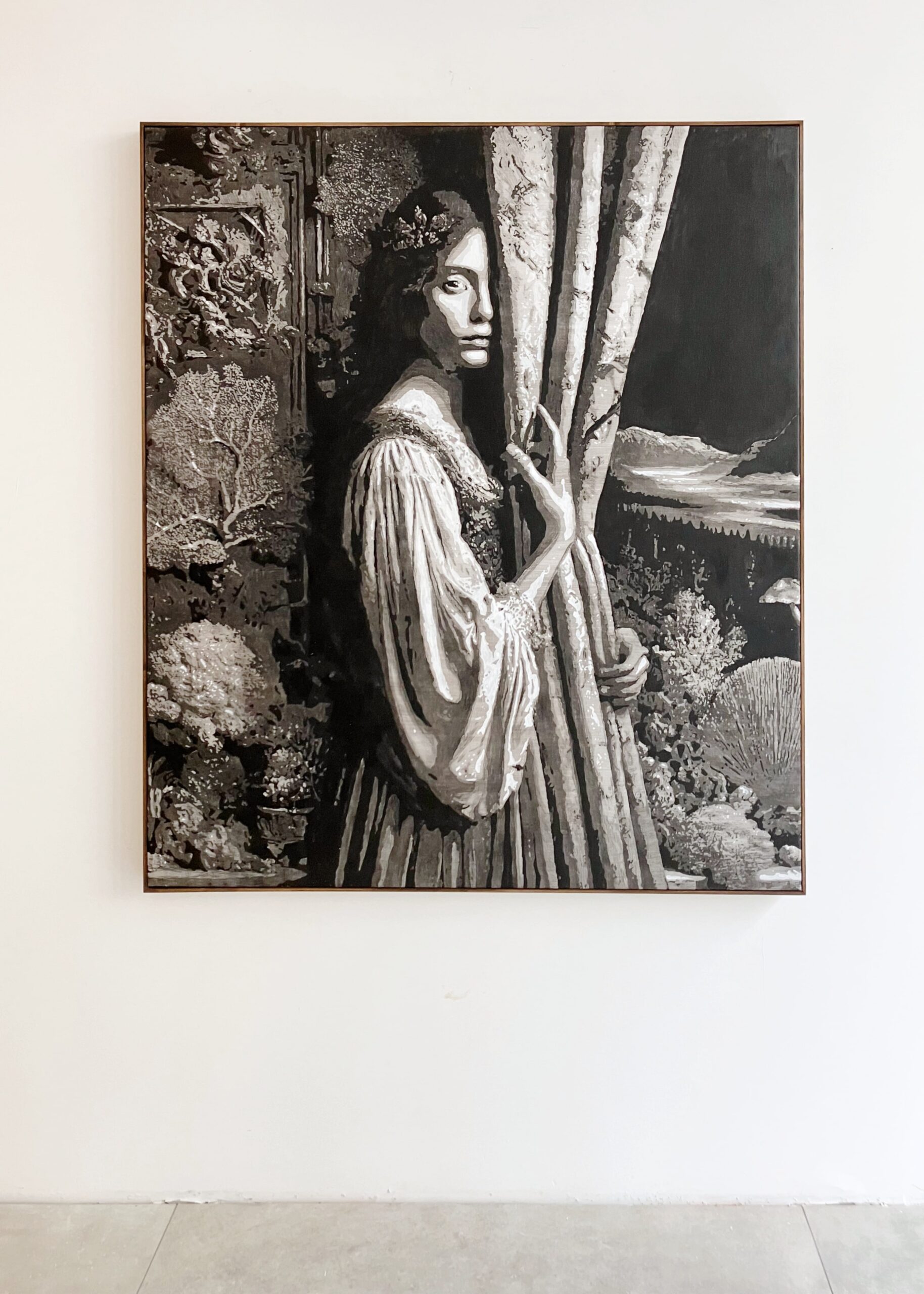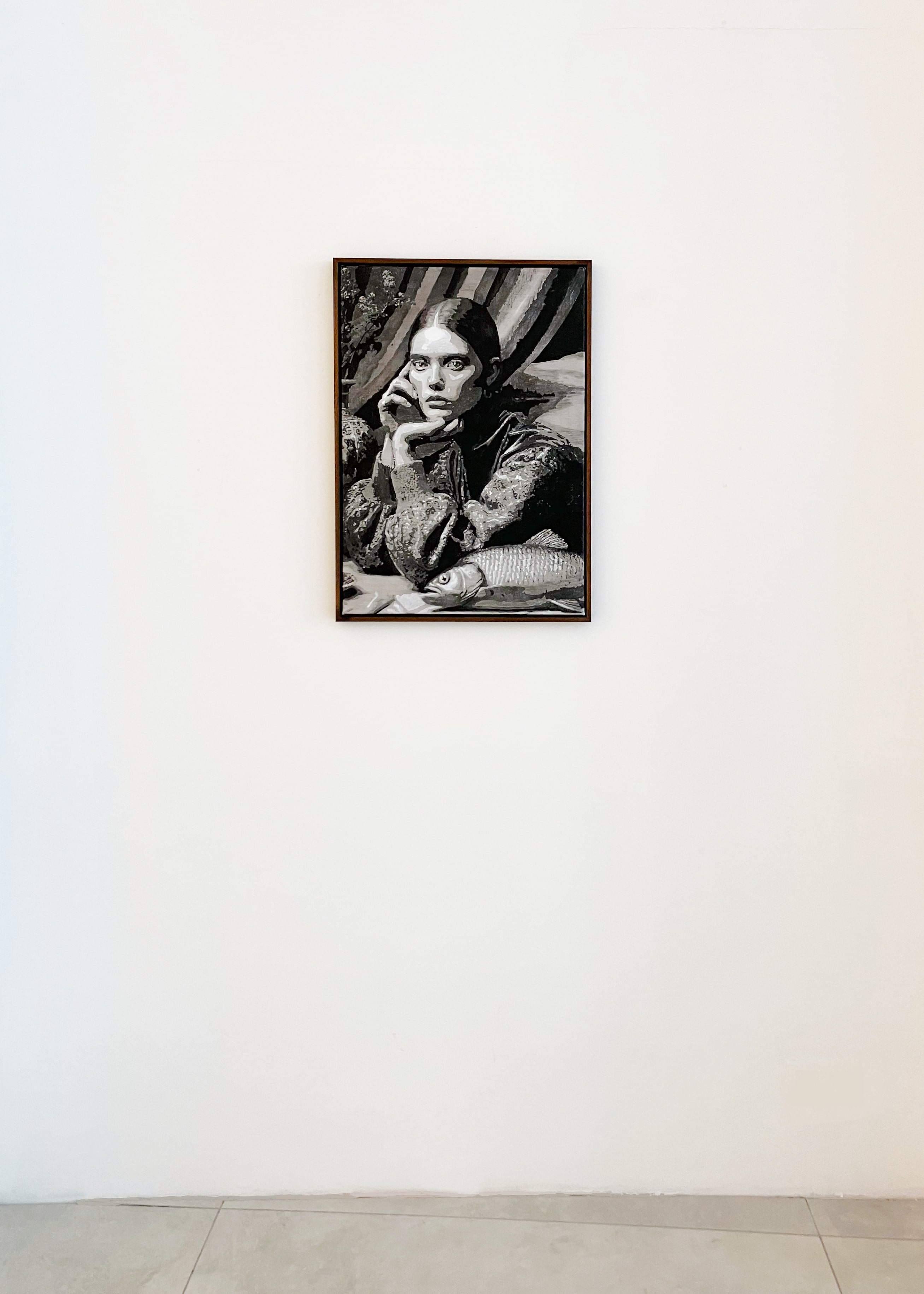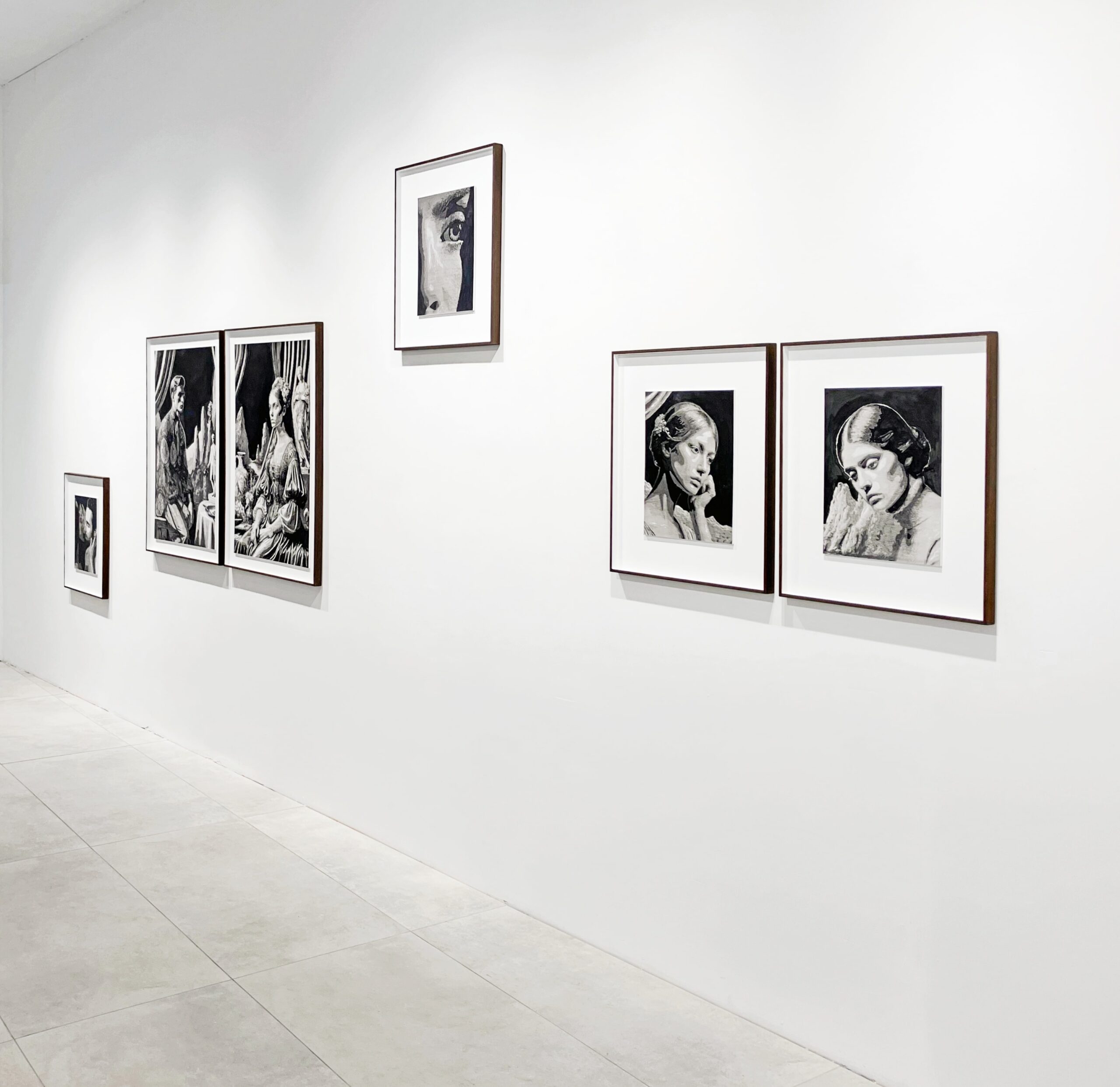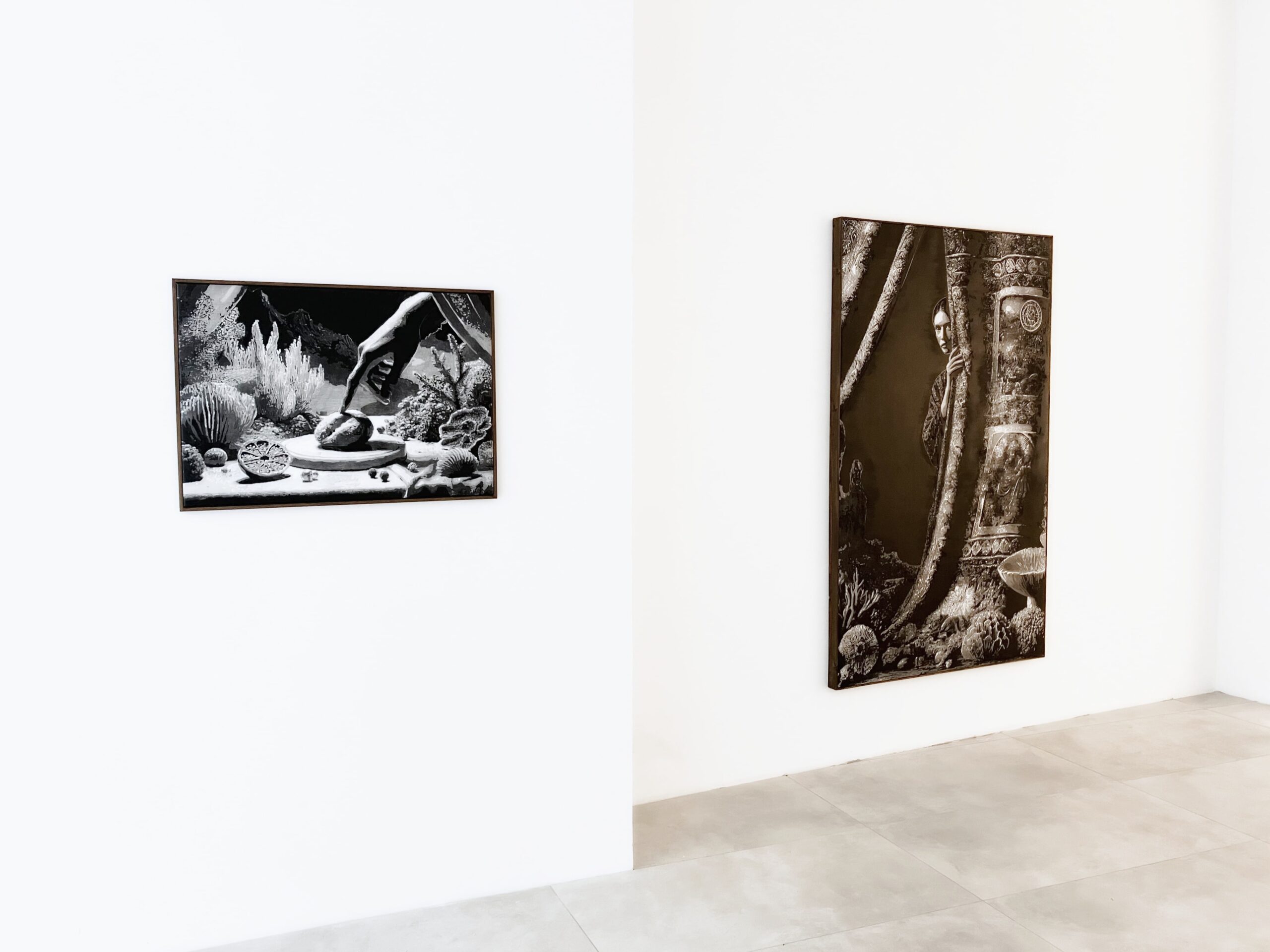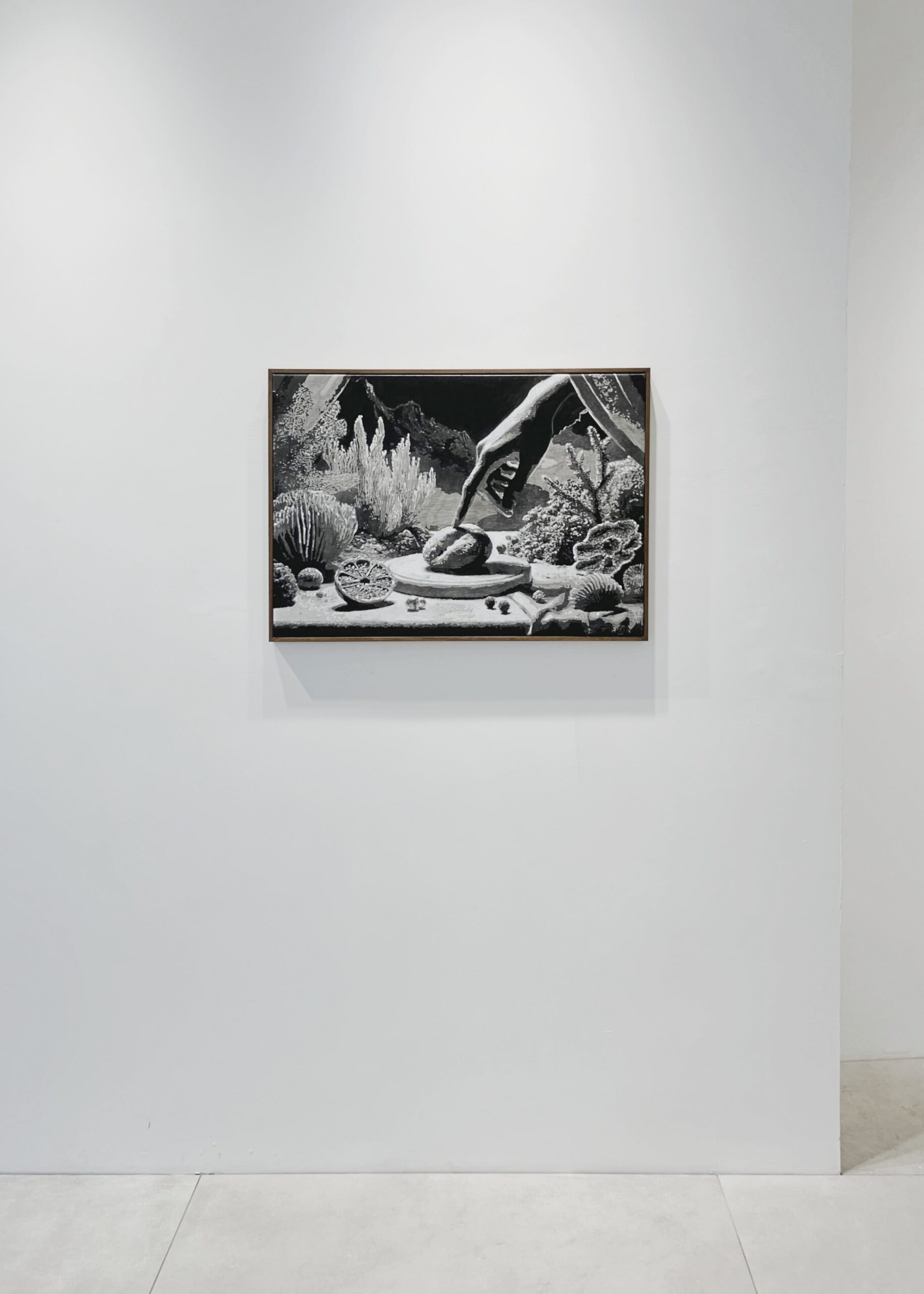Julien Delagrange
Artificial Empathy
September 29, 2024 — February 2, 2025
Space60
Klapdorp 60
Antwerp, Belgium
Space60 and Julien Delagrange are pleased to present a series of twelve new charcoal drawings on linen and on paper in Antwerp, Belgium, for his second solo exhibition with the gallery. In this series of so-called Forbidden Productions—building upon his preceding series titled Forbidden Reproductions and Forbidden Collages questioning the problematic nature of artistic appropriation and creativity in the 21st century—the artist investigates AI as a creative tool for artists, aiming to look beyond the hype and beyond the technology, and to create a synergetic triangle between AI, the artist, and the viewer. But in the end, the artworks are not about technology or AI. They continue to explore the lingering effects and imminent internal conflicts of our human nature in this world and society. Sin, burden, identity, existentialism, spiritual desire, and empathy in catharsis.
Is AI the end of human creativity? No. There are two major misconceptions about art and AI. The first is that once you use AI everything becomes easy. That is not true in any way when making art or anything of real interest. The second misconception is that AI would drive out the essence of art and creativity; human emotion and intuition. The romantic image of the mysterious mind is both alluring and deceptive. In order to consistently evoke an emotional response of mystery, one often has to work very rationally and systematically. To the chagrin of those who envy it. Creating and executing a good image in a work of art is not only an irrational, romantic and expressive act, but also an act of technical know-how and artistic knowledge of art history, a clear conceptual, philosophical, or societal vision of the message, and a very personal method that is different for every artist and evolves over time. All these things are forgotten in the (initial) experience of the work, but it is precisely these things that make the experience. The artist cannot accidentally create a complex web of meanings that cannot be modeled by AI but can be visualized, including things that cannot be spoken. The human mind is so complex, rich, and persistently unpredictable that to say that AI can simulate human artistic input and development would be a gross underestimation of what it means to be human.
A triangular relationship arises between the artist, the AI, and the viewer. The AI becomes a mediator. From this perspective, we approach meaning, and this is precisely where AI fails. Art is the ideal medium alternating between these signifiers and interpretations triggered by the viewer. The artist influences our mental processes to evoke meaning—in this case, through images. In this way, we go beyond the typical operation of data-centered AI, where one provides data as input, and the AI guides a result, but we look for meaning through AI and, therefore, human-centered AI. In this way, we do not push the boundaries of art by using AI but the boundaries of AI through art. In this way, AI is not used to replace creativity but to strengthen it.
There are several possible combinations of AI and art. One can study art with AI. One can also make art with AI, which is probably the most common and obvious option at the moment, although the results of this strategy are often disappointing, and this abandonment of creativity is not only a taboo that people often try to hide because it, rightly or wrongly, offends the public opinion. But, at the same time, AI can also convert mental processes, such as the creative process of the artist, into systems. And this is exactly the methodology of this series of works. The AI creates a system of the artist’s creative thinking and background. This means that the AI had to study and absorb all the works made by the artist and their various meanings in order to understand how to form and visualize signifiers, as well as all relevant art-historical and philosophical concepts.
This process had surprising results, both negatively and positively. And sometimes positive in the negative. First of all, the ratio of good to useless images is pitiful. It is clear that the AI is limited by the images present in the database and compositionally has difficulty creating images that break through the decorum—which is necessary to escape the cascade of images we consume 24/7 on our screens and to achieve iconicity. In addition, one can see that AI has enormous difficulty in capturing different meanings in one image and often focuses too much or too explicitly on one or more meanings. Chance, in the tradition of generative art, plays an important role here. It is an almost coincidental hit of one in thirty to a hundred image generations to obtain an image that is semantically satisfactory and can, therefore, serve as a carrier of meaning. On the other hand, it is also fascinating to be completely surprised by these multiple image generations and to obtain an image that is different from what the artist had in mind and is better. In some cases, the AI makes a mistake in the image generation or in the image itself, such as a landscape as a background that is simultaneously a drapery in the foreground, a bottle that floats next to the table, eyes that deviate from a naturalistic gaze, or an element that has completely lost its shape and takes on a new and non-existent entity. These unintentional mistakes of the AI create enigmatic conflicts that make the image succeed, or how failure can be a poetic added value.
In addition, how can art affect the image’s meaning—or how we look differently at a soup can, simply because it is depicted on canvas, courtesy of Andy Warhol? To what extent does this work with AI images? How does this change our interpretation of that image precisely because it is drawn or painted on canvas? Through the artist’s execution, the AI images can become something completely different and, therefore, also have a different effect on humans. The question is, therefore, not whether AI replaces art or human creativity but to what extent art or human creativity elevates AI and vice versa. A generated image, one of many, starts to live and is filled with meaning and leads a life of its own, precisely at that level where AI collides with its limits. It is then fascinating to see how a certain image can completely absorb a meaning or feeling and can no longer be disconnected with it, as it lives on in artificial empathy.
The exhibition runs from September 29, 2024, to February 2, 2025, and is open Thursday through Saturday from 2:00 PM to 6:00 PM.
